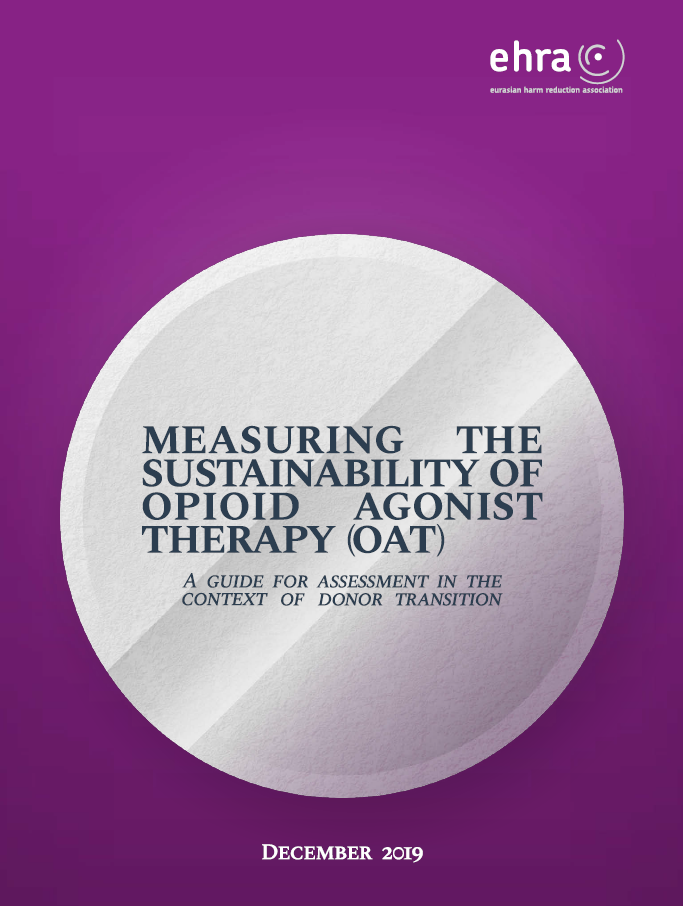This Guide was initiated by the Eurasian Harm Reduction Association (EHRA) to provide countries with an approach and tools to assess their progress in building the sustainability of opioid agonist treatment (OAT) within the context of donor transition. This material builds upon previous assessment frameworks and experiences in measuring sustainability and transition readiness in the areas of HIV, tuberculosis, malaria, and harm reduction. Unlike other tools and instruments, this guide provides a much deeper analysis into one specific intervention – opioid agonist treatment – and, in particular, its programmatic elements and heavily relies on international policy related to, and programmatic guidance on, opioid agonist therapy.
The OAT sustainability framework is a conceptual approach to understanding and measuring OAT sustainability in the context of transition of donor funding and international support. It aims to support public health experts and OAT advocates with evidence that could be used in national processes related to transition and to broader efforts for improving drug policy, universal health coverage (UHC) and the responses to HIV, TB, hepatitis and prison health.
The Measurement Framework offers a matrix for measurement, comprising issue areas, indicators and benchmarks. For each of the three issue areas, namely Policy & Governance, Finance & Resources, and Services, a set of indicators is proposed and several benchmarks are offered on how to measure progress under each indicator for the programmatic component that utilises existing WHO, UN and international guidance on OAT.
In early 2020, the tool was piloted in three countries: Belarus, Ukraine, and Tajikistan. This publication is available in the English and Russian languages. You may access the assessment report in Belarus and Tajikistan following the links:

